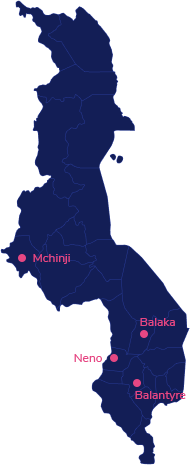Women and girls in Malawi participate less in the labour force (63.3%) than men and boys (72.4%). Agriculture is the predominant industry for both genders in Malawi, with 67.2% of women and girls in the workforce working in agriculture (The World Bank, Gender Data Portal). Women and girls are more likely than men and boys to be in vulnerable employment, particularly as many women and girls are smallholder farmers who have limited security (The World Bank, Malawi).

Many women and girls in Malawi marry early: 38% are married by age 18 (Girls Not Braides, Child marriage atlas — Malawi). Early marriage is driven by poverty, as families marry off their daughters in an effort to reduce debt burdens or receive bride prices, as well as lack of opportunity and norms around pregnancy outside of marriage. Early marriage often correlates with leaving education. Of those married by the age of 18 in Malawi, 52% have a primary education, 29% have lower-secondary education and 5% have higher education (National Statistical Office, Malawi Multiple Cluster Indicator Survey 2019-20, MICS Survey Findings Report).
Malawi continues to have low education rates for both women and girls and men and boys. Rural and poor children of both genders have lower completion rates overall than urban children. Girls have a higher completion rate at primary school (38%) than boys (29%), but completion rates drop significantly for both groups in junior and senior secondary schools (UNICEF, Malawi Education Fact Sheet).
Malawi is very vulnerable to climate change and climate-related disasters. Many smallholder farmers rely on a single rainy season for crop production, and so the country is particularly vulnerable to changes in rain levels brought on by drought (The World Bank, Malawi Climate Change and Development Report). Women and girls are particularly vulnerable to drought, as they represent 65% of all smallholder farmers.
Malawi has seen changes in water availability from shallow wells. These changes are partly connected to larger climate changes such as higher temperatures and changing rainfall patterns. Over 85% of the rural population rely on these wells for their water. Women and girls often have primary responsibility in their communities for collecting water and experience greater stress when water is scarce (The World Bank, Malawi Climate Change and Development Report).
Floods and cyclones also occur in Malawi, and these weather events create significant extra stress for already vulnerable populations. For example, 2019’s Cyclone Idai “caused devastating floods that affected an estimated 975,600 people and submerged or washed away mature crops and destroyed irrigation infrastructure” (ReliefWeb, Climate Change is Putting Women & Girls in Malawi at Greater Risk of Sexual Violence). Women and girls become increasingly vulnerable during climate disasters because of challenges such as a lack of necessary hygiene facilities and healthcare, exposure to water-borne illness, pressures to migrate, and threats to their physical safety and risk of trafficking due to displacement.
Women and girls are more vulnerable to climate shocks, with data showing that households of women-managed land saw more changes in overall consumption and caloric intake (The World Bank, Malawi Climate Change and Development Report). Women and girls face further barriers to escaping poverty, including a lack of education, early marriage and a lack of formal employment opportunities, meaning they have fewer resources and less capital to improve their circumstances.
In the 2018 Malawi census, there were 937,536 women with disabilities, which equates to 6.2% of the population. The most common disabilities were “seeing (49 per cent), walking/climbing (27 per cent), hearing (24 per cent), intellectual (16 per cent), and speaking (9 per cent)” (Centre for Human Rights, Malawi Revised Country Report).
Persons with disabilities in Malawi experience lower progress on social measures, including lower rates of school attendance and lower literacy rates. According to the census, girls with disabilities were more likely than boys with disabilities and girls in general to drop out of school. These figures point to girls with disabilities experiencing additional stressors when pursuing an education. The top factors for school dropout for girls with disabilities are their disability, lack of money and sickness (UNICEF, A Situational Analysis of Children with Disabilities in Malawi).
Persons with disabilities face barriers to accessing technical training and have fewer employment opportunities. They also face barriers to accessing vocational training programmes — for example, lack of funds, inaccessible transportation and inaccessible buildings, and for women and girls specifically, lack of family support (International Labour Organization, Persons with Disabilities). Persons with disabilities are often excluded from formal employment and may look to self-employment or job creation opportunities to secure work. It is estimated that people with disabilities make up only 0.9% of the labour force, a figure that highlights the significant gap in employment for this population (Remnant, Disability Inclusive Employment in Urban Malawi).
People with disabilities have higher rates of mental and chronic illness and face specific barriers within their communities. For example, women and girls with disabilities in Malawi face discrimination and stigma because of cultural and social norms. There have been reports of women and girls with disabilities being subjected to physical and sexual violence, and violent attacks against people with albinism, due to cultural norms around disability (Malawi Human Right’s Commission, Article 6).